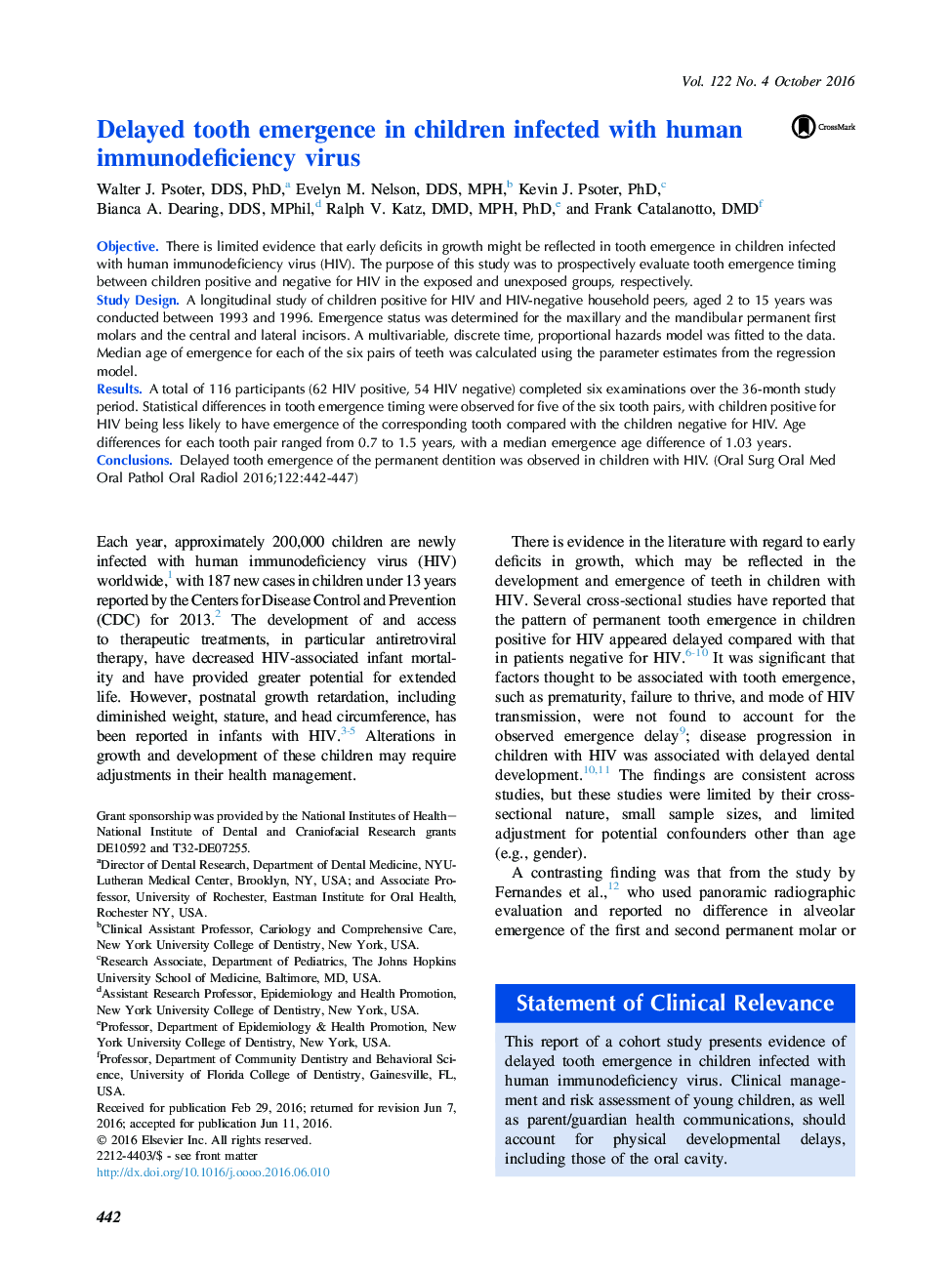| Article ID | Journal | Published Year | Pages | File Type |
|---|---|---|---|---|
| 3166293 | Oral Surgery, Oral Medicine, Oral Pathology and Oral Radiology | 2016 | 6 Pages |
ObjectiveThere is limited evidence that early deficits in growth might be reflected in tooth emergence in children infected with human immunodeficiency virus (HIV). The purpose of this study was to prospectively evaluate tooth emergence timing between children positive and negative for HIV in the exposed and unexposed groups, respectively.Study DesignA longitudinal study of children positive for HIV and HIV-negative household peers, aged 2 to 15 years was conducted between 1993 and 1996. Emergence status was determined for the maxillary and the mandibular permanent first molars and the central and lateral incisors. A multivariable, discrete time, proportional hazards model was fitted to the data. Median age of emergence for each of the six pairs of teeth was calculated using the parameter estimates from the regression model.ResultsA total of 116 participants (62 HIV positive, 54 HIV negative) completed six examinations over the 36-month study period. Statistical differences in tooth emergence timing were observed for five of the six tooth pairs, with children positive for HIV being less likely to have emergence of the corresponding tooth compared with the children negative for HIV. Age differences for each tooth pair ranged from 0.7 to 1.5 years, with a median emergence age difference of 1.03 years.ConclusionsDelayed tooth emergence of the permanent dentition was observed in children with HIV.
